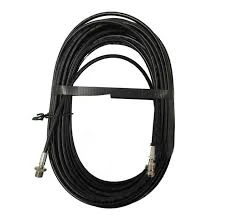Power Steering Low Pressure Hose Leak Causes and Solutions
Power Steering Low Pressure Hose Leak Understanding the Causes and Solutions
Power steering is an essential component of modern vehicles, providing the driver with the ease of steering and a better overall driving experience. The system operates through a combination of hydraulic fluids and various hoses, including the low pressure hose, which plays a crucial role in delivering the necessary fluid to assist in steering. However, like any mechanical system, power steering is prone to issues, one of the most common being a leak in the low pressure hose. Understanding the causes, symptoms, and solutions of this problem can help vehicle owners address it effectively.
What is a Low Pressure Hose?
The power steering system consists of several hoses – the high-pressure hose and the low-pressure hose. The high-pressure hose carries the hydraulic fluid from the pump to the steering gear, while the low-pressure hose returns the fluid back to the pump. The low pressure hose operates at significantly lower pressures compared to its counterpart. This makes it more susceptible to wear and damage over time due to factors such as heat, friction, and exposure to various elements.
Identifying a Leak
Recognizing the symptoms of a low pressure hose leak can save vehicle owners from more severe problems down the road. One of the most noticeable signs is the presence of fluid under the vehicle. Power steering fluid typically has a reddish hue and a distinct consistency, different from that of engine oil or transmission fluid. Additionally, drivers may notice difficulty in steering or a whining sound while turning the steering wheel, indicating that the power steering pump is struggling to draw fluid.
Other indicators include the steering wheel becoming stiffer and the presence of air pockets in the system, which can lead to erratic steering response. If a driver experiences any of these symptoms, it is essential to investigate and address the issue promptly.
Common Causes of Low Pressure Hose Leaks
power steering low pressure hose leak

Several factors can contribute to the degradation of a low pressure hose, leading to leaks. Age and wear are significant contributors; as hoses age, they can become brittle and develop cracks or fissures. Abnormal movement or excessive vibration can also cause wear at the hose connections or lead to premature failure.
Environmental factors play a role as well. Exposure to high heat from the engine, road debris, or corrosive substances (like road salt) can damage the rubber material of the hose. Additionally, improper installation or the use of substandard components can lead to future problems, including leaks.
Resolving the Issue
Fixing a power steering low pressure hose leak is essential not only for the vehicle's performance but also for safety. The first step in resolution is identifying the source of the leak. This may involve visual inspections or pressure testing the system to locate the exact point of failure.
Once the leak is identified, the damaged hose should be replaced with a new, high-quality hose designed specifically for the vehicle type. It's crucial to use original equipment manufacturer (OEM) parts or reputable aftermarket parts to ensure compatibility and durability.
After the replacement, the power steering system should be properly bled to remove any air trapped within the system. This will restore proper function and responsiveness to the steering. It is advisable to periodically check the power steering fluid levels and inspect hoses for signs of wear, as preventative maintenance can help avoid future leaks.
Conclusion
A power steering low pressure hose leak can significantly affect your vehicle's steering performance and safety. Recognizing the symptoms early and understanding the common causes can empower vehicle owners to take swift action. By ensuring proper maintenance and using quality replacement parts, drivers can keep their power steering systems operating smoothly, ultimately enhancing their driving experience and safety on the road. Regular checks and timely repairs will go a long way toward prolonging the life of the power steering system and maintaining optimal vehicle performance.
-
Ultimate Spiral Protection for Hoses & CablesNewsJun.26,2025
-
The Ultimate Quick-Connect Solutions for Every NeedNewsJun.26,2025
-
SAE J1401 Brake Hose: Reliable Choice for Safe BrakingNewsJun.26,2025
-
Reliable J2064 A/C Hoses for Real-World Cooling NeedsNewsJun.26,2025
-
Heavy-Duty Sewer Jetting Hoses Built to LastNewsJun.26,2025
-
Fix Power Steering Tube Leaks Fast – Durable & Affordable SolutionNewsJun.26,2025

